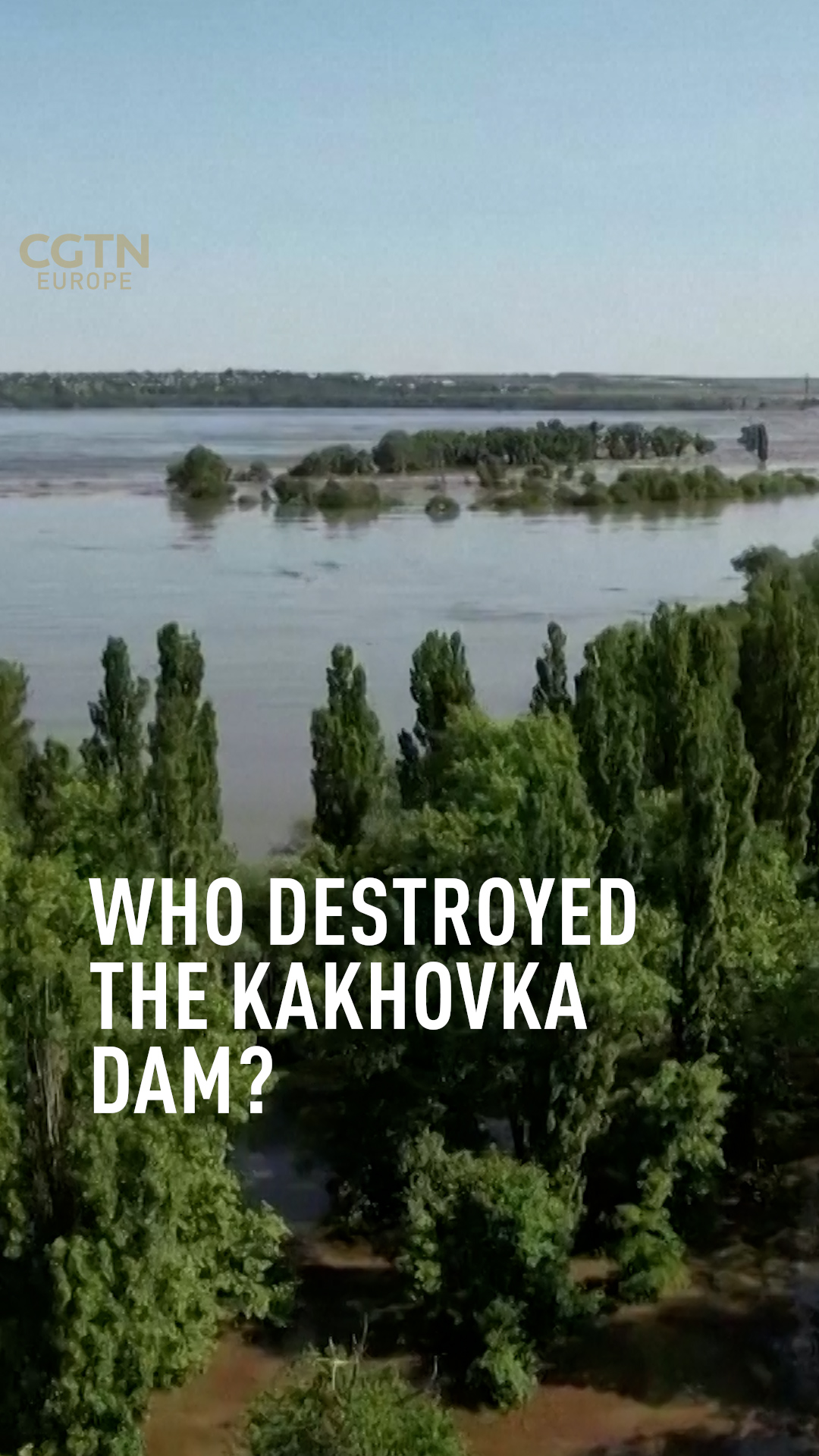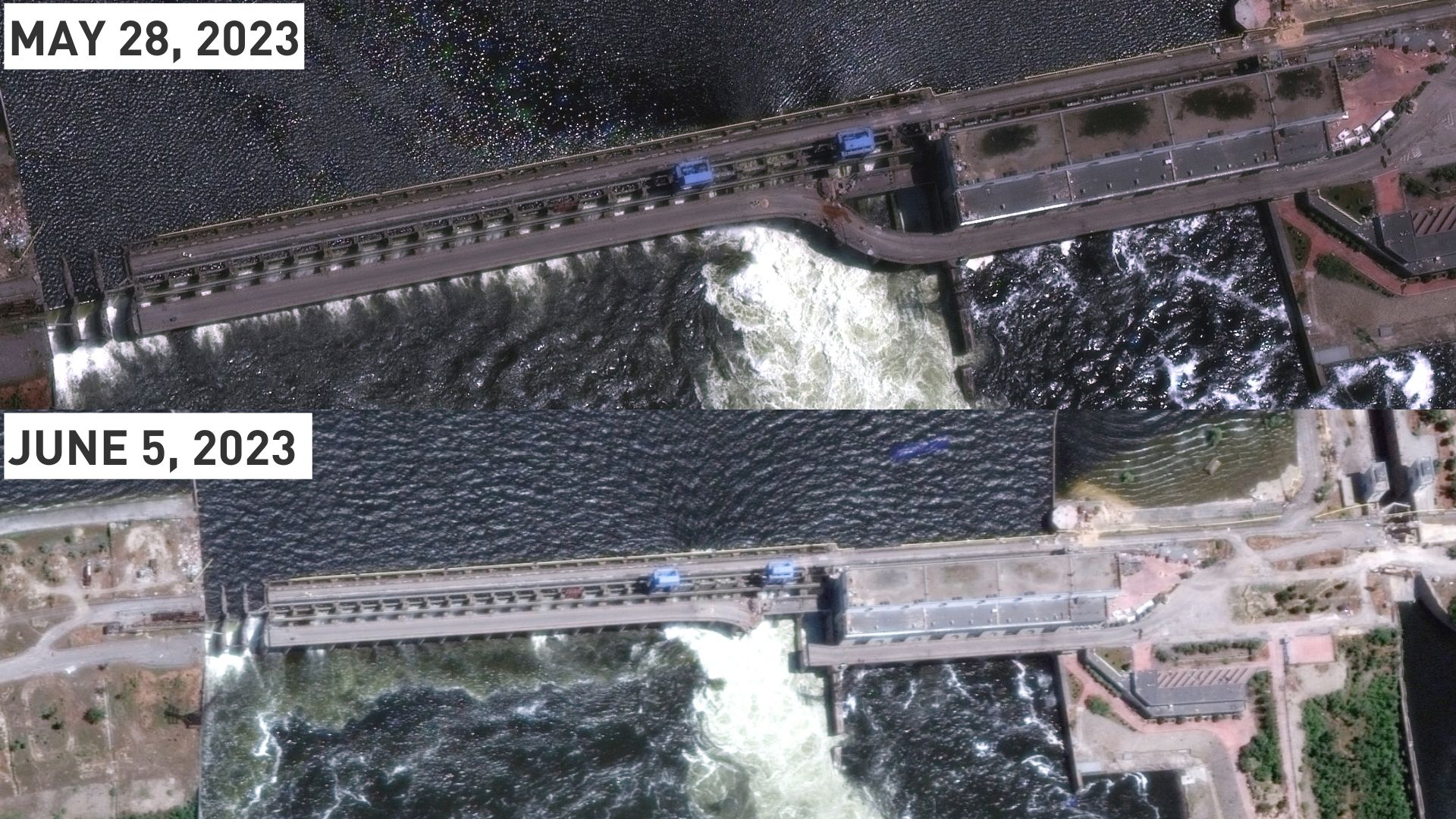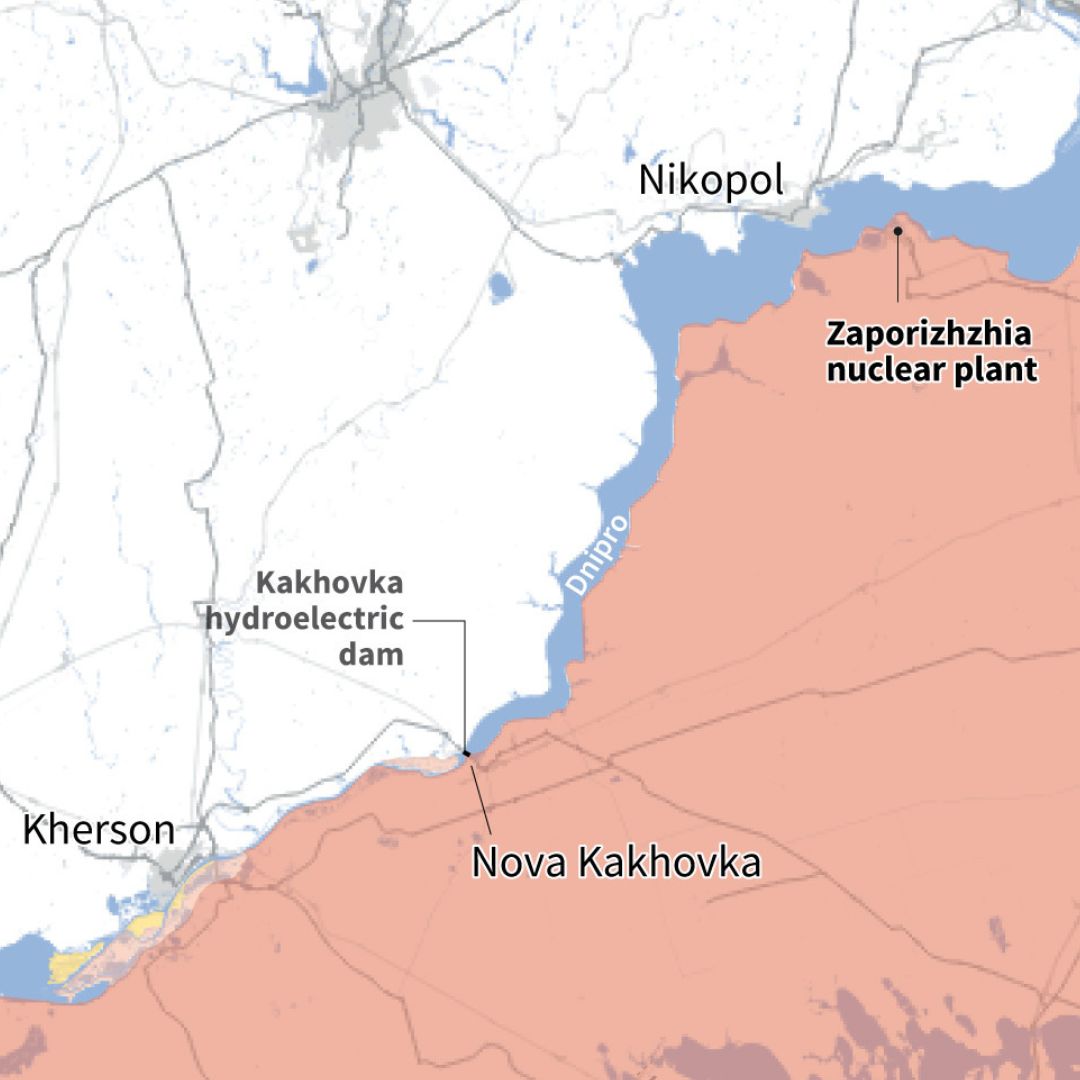00:58

In the early hours of Tuesday morning Ukraine's Nova Kakhovka dam was partially destroyed, sending a torrent of water towards nearby settlements that could eventually flood up to 80 towns and villages.
Hundreds of thousands of people have since been evacuated and huge areas of agricultural land have been flooded, with waters expected to rise for between three and 10 days.
The dam is a critical cog in Ukraine's utilities infrastructure. It supplies water to the Crimean peninsula to the south, which was annexed by Russia in 2014, as well as the Zaporizhzhia nuclear plant to the north.
READ MORE
Prince Harry attacks UK press
French influencers threatened with imprisonment
London's kung fu family
Ukrainian President Volodomyr Zelenskyy said the dam was detonated with explosives from within and blamed the Russians. Russia says Ukraine has sabotaged the dam to cut water supplies to Crimea and claims it's also a military tactic used to mitigate Kyiv's faltering counter-offensive.
So, who is responsible? And what do both sides stand to win and lose?
Was it a military tactic?
On Tuesday, Russia accused Ukraine of shelling the dam to gain a strategic military advantage. Moscow has accused Kyiv of failing in a counter-offensive aimed at reclaiming Russian occupied territory in the south of the country and has now taken extreme measures to break through Russian defences.
Russia has pointed to an article published in the Washington Post in December 2022 as evidence of Kiev's plans and says it even warned the United Nations and world leaders of Ukraine's plan to blow up the dam two months prior.
In the article, Ukraine's Major General Kovalchuk is quoted admitting conducting a test strike with a HIMARS launcher against one of the dam's floodgates to see if the Dnipro river could be flooded sufficiently to raise water levels enough to stop Russian crossings but avoid devastating nearby villages and farmland.
According to Kovalchuk, the strike worked but was seen as a last resort and the plan wasn't implemented. Russia, however, says that Ukraine carried out Tuesday's attack so it can relocate its armed forces to the north bank of the Dnipro and sustain a long awaited counter-offensive.
In response, Ukraine's military has accused Russia of deliberately blowing up the dam in fear of Ukrainian forces using the road that goes over the dam to get its troops into Russian occupied territory.
Was the dam already damaged?
Images captured by U.S. based satellite technology company Maxar Technologies on May 28 show that the dam was already damaged six days before it fully burst its banks.
In May, Reuters also reported how Ukrainians living in the village of Lysohirka had suffered flooding to their homes that they blamed on Russia's occupation of the dam.

Was the dam already damaged? An image taken by U.S. satellite technology company on May 28 shows the dam is intact but there was a section missing on June 5 before the alleged attack./Reuters/Maxar Technologies.
Was the dam already damaged? An image taken by U.S. satellite technology company on May 28 shows the dam is intact but there was a section missing on June 5 before the alleged attack./Reuters/Maxar Technologies.
A Russian energy official warned earlier in May that the dam risked being overwhelmed by record-high water levels.
Inna Rybalko, an official from Ukraine's state waterways agency, said this spring had seen an unusually high amount of rain, with 3.5 times the regular amount of monthly rainfall recorded nationwide in April.
But state company, Ukrhydroenergo, suggested that flooding was Russia's fault. He said: "The rise of the Dnipro's water level, as a result of which settlements in the Zaporizhzhia region were flooded, is linked to the Russian occupation of the Kakhovka dam.

The pink area is the Russian-controlled parts of Ukraine highlighting the positioning of the dam on the frontline of the conflict./AFP
The pink area is the Russian-controlled parts of Ukraine highlighting the positioning of the dam on the frontline of the conflict./AFP
Was Crimea a target?
Ukraine's long awaited counter-offensive aims to retake large swathes of Russian-held territory in the south of the country. In order to achieve those aims Kyiv must break Russian control over an area that connects Crimea to the eastern Donbas region.
If Ukraine can find a way to break Russia's significant defensive lines to the south of Zaporizhzhia and split that territory in two then it's possible for its armed forces to isolate Crimea and achieve a major strategic victory. Russia seized control Crimea from Ukraine in 2014 and Russian troops have occupied it ever since.
Russia says that by attacking the dam, Ukraine is seeking to disperse Russian troops and relocate its own forces to the north bank of the Dnipro river, and has accused Kyiv of causing a deliberate humanitarian disaster in revenge against the Crimean people for voting to become part of Russia back in 2014.
But experts believe that in the short term it is Russia who has more to gain. The dam's collapse occurred just as Ukraine was poised to launch a counteroffensive and could complicate the advance of its forces in any assault, analysts said, though Kyiv has not divulged in which direction it plans to strike.
"Bearing in mind Russia is on the strategic defensive and Ukraine on the strategic offensive, in the short term it's an advantage to Russia, definitely," Ben Barry, senior fellow at the International Institute for Strategic Studies, told Reuters.

Subscribe to Storyboard: A weekly newsletter bringing you the best of CGTN every Friday